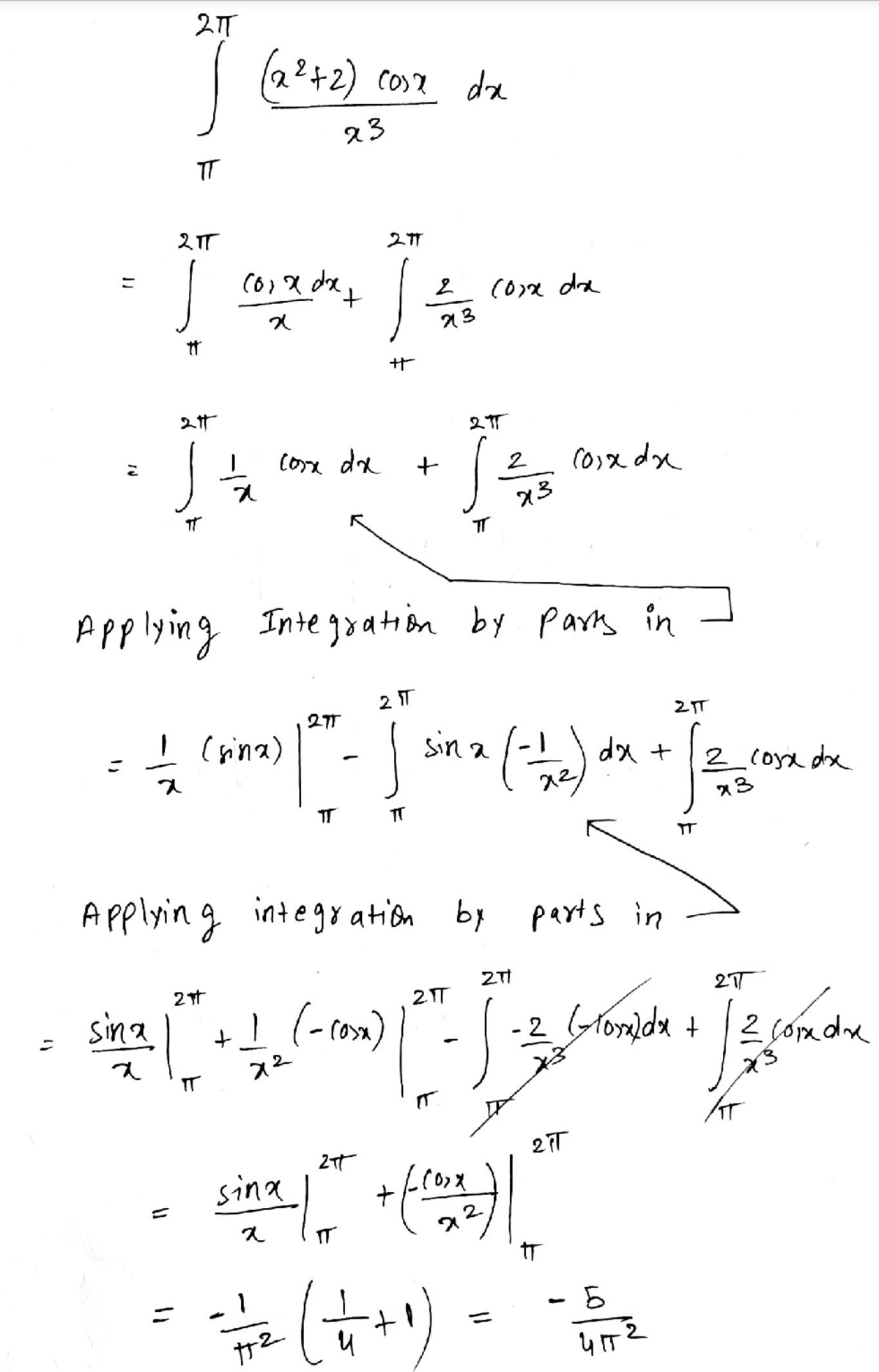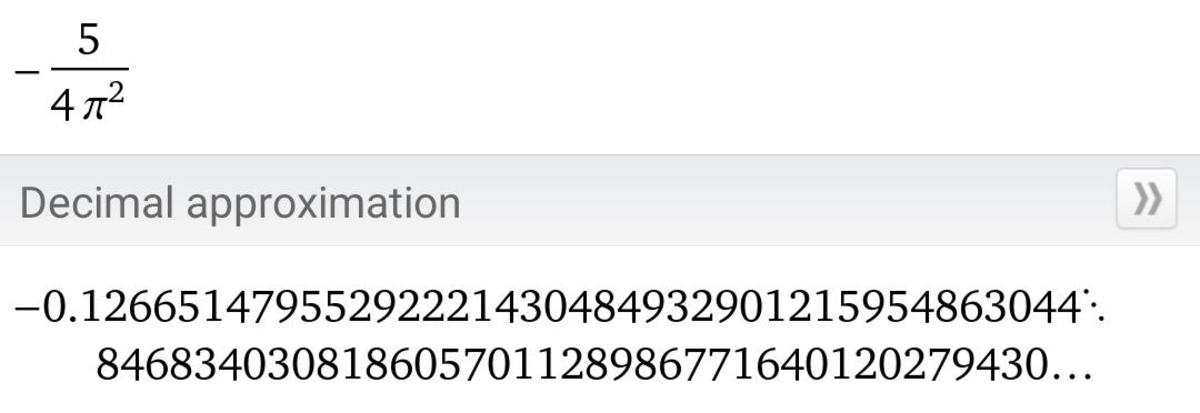Tricky Integration
Here is a problem
Here is the solution

Guys if anyone has an alternative approach please share it in comments below.
Thanks in advance.
No vote yet
1 vote
Easy Math Editor
This discussion board is a place to discuss our Daily Challenges and the math and science related to those challenges. Explanations are more than just a solution — they should explain the steps and thinking strategies that you used to obtain the solution. Comments should further the discussion of math and science.
When posting on Brilliant:
*italics*or_italics_**bold**or__bold__paragraph 1
paragraph 2
[example link](https://brilliant.org)> This is a quote# I indented these lines # 4 spaces, and now they show # up as a code block. print "hello world"\(...\)or\[...\]to ensure proper formatting.2 \times 32^{34}a_{i-1}\frac{2}{3}\sqrt{2}\sum_{i=1}^3\sin \theta\boxed{123}Comments
Or, more simply, dxd(xsinx−x2cosx)=x3x2+2cosx so the integrand is exact.
Log in to reply
@Mark Hennings But how do you know that? It is difficult for me to predict
Log in to reply
Elegant proofs are often the result of earlier work. Once the integration by parts cancelled out all the integrals, all it takes is to go through your result and write a shiny, single-line, proof. On the other hand, for this integral to have a nice simple answer (not expressed in terms of the cosine and sine integrals and their relatives, it was highly likely that an exact integral was hiding here, so I looked for it.
Log in to reply
@Mark Hennings Thank you so much ,
Can you please help me in this problem,
Thanks in advance.
Log in to reply
Hey buddy, it's actually better to show your attempt as well. Otherwise, your comment might come off as "Hey, do my homework for me because I'm lazy."
Log in to reply
@Pi Han Goh It is not my homework.
I am solving , because I have my own interest.
I will post a note showing the attempt of this problem within some hours.
I can verify that 9/10 times when he asks a doubt about a question, he tries the question out himself.
And, he's not assigned this as homework, so I wouldn't know why else he'd be doing this, unless he wants to personally benefit and learn how to solve these kinds of questions.
This stuff is for his JEE preparation.
Log in to reply
@Krishna Karthik For not Jee bro. It's my passion.
And it is good that Jee has included physics in their syllabus , so it is basically a benefit for me .
Log in to reply
See, this is why I admire you. You take the effort to do all this physics, and better your ability to apply your knowledge. Good stuff mate. Don't listen to Pi Han Goh.
This is the perfect solution.
Log in to reply
@Pi Han Goh please can we have some alternative approach
@Pi Han Goh i think you said A,B,C,D, you were talking about some different approach?
Log in to reply
I've explained how I've solved it here
@Steven Chase @Karan Chatrath @Mark Hennings @Krishna Karthik
Ummm why is my integral calculator coming up with a different value, −0.12?
@Lil Doug
Log in to reply
@Krishna Karthik Because its value is that only
Log in to reply
WTFFFFFF
I actually solved the problem then! I tried simplifying and then it came up with 0.03!!!! WTF is actually going onnnnn... I used integration by parts only, btw.
And I've been thinking like an idiot that all this time I didn't solve it right... lmao
Log in to reply
@Krishna Karthik nice, so this time you solved it. Well done!
Log in to reply
Yea mate. Thanks.